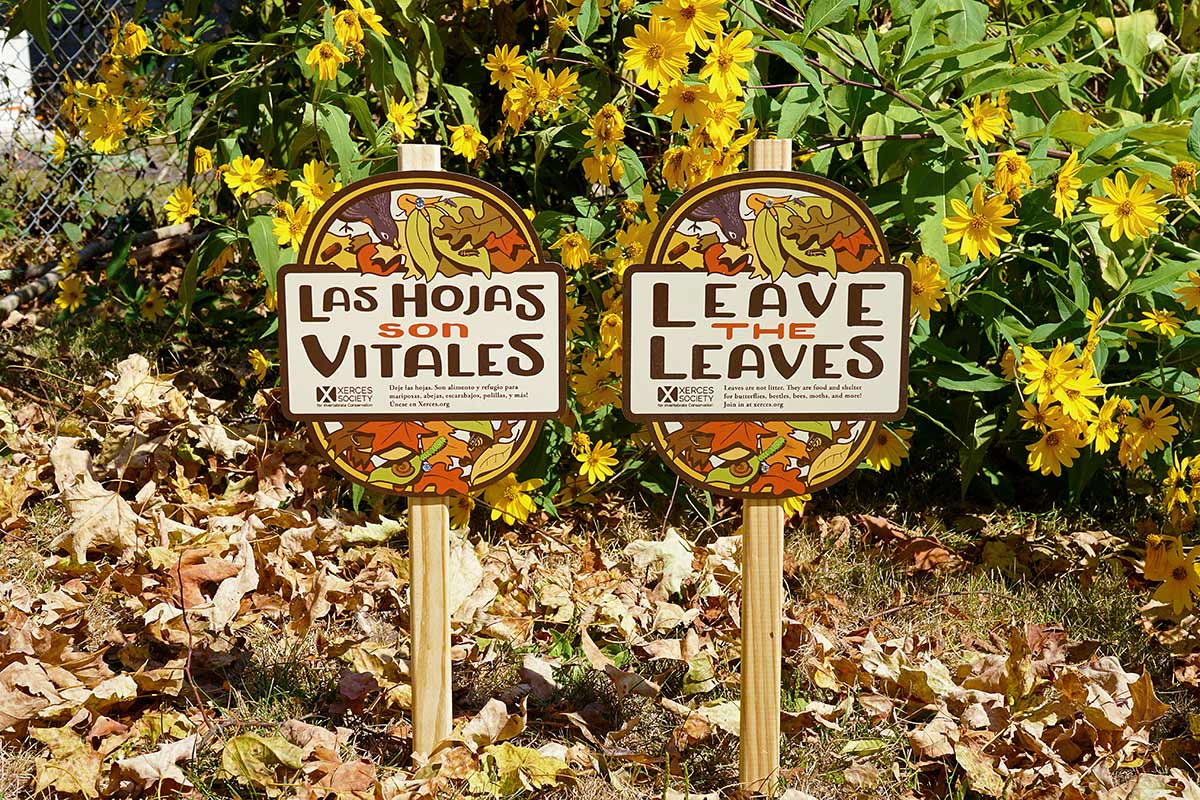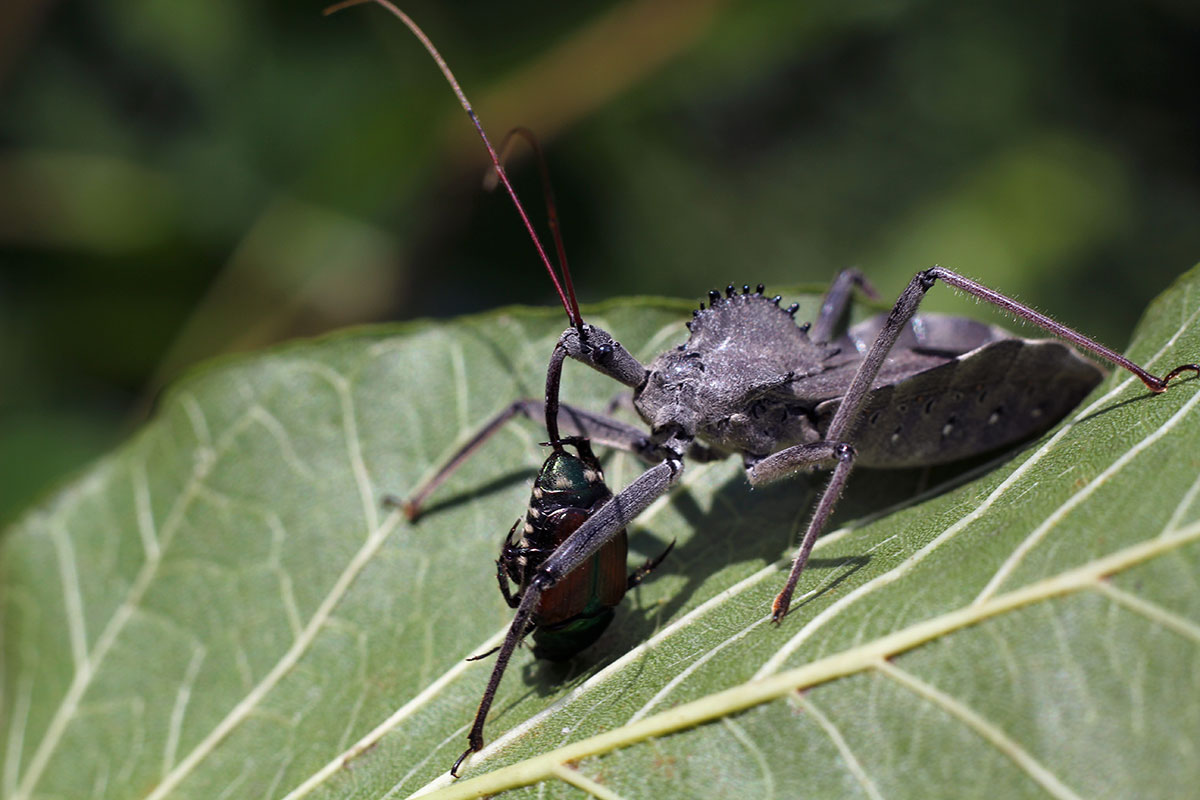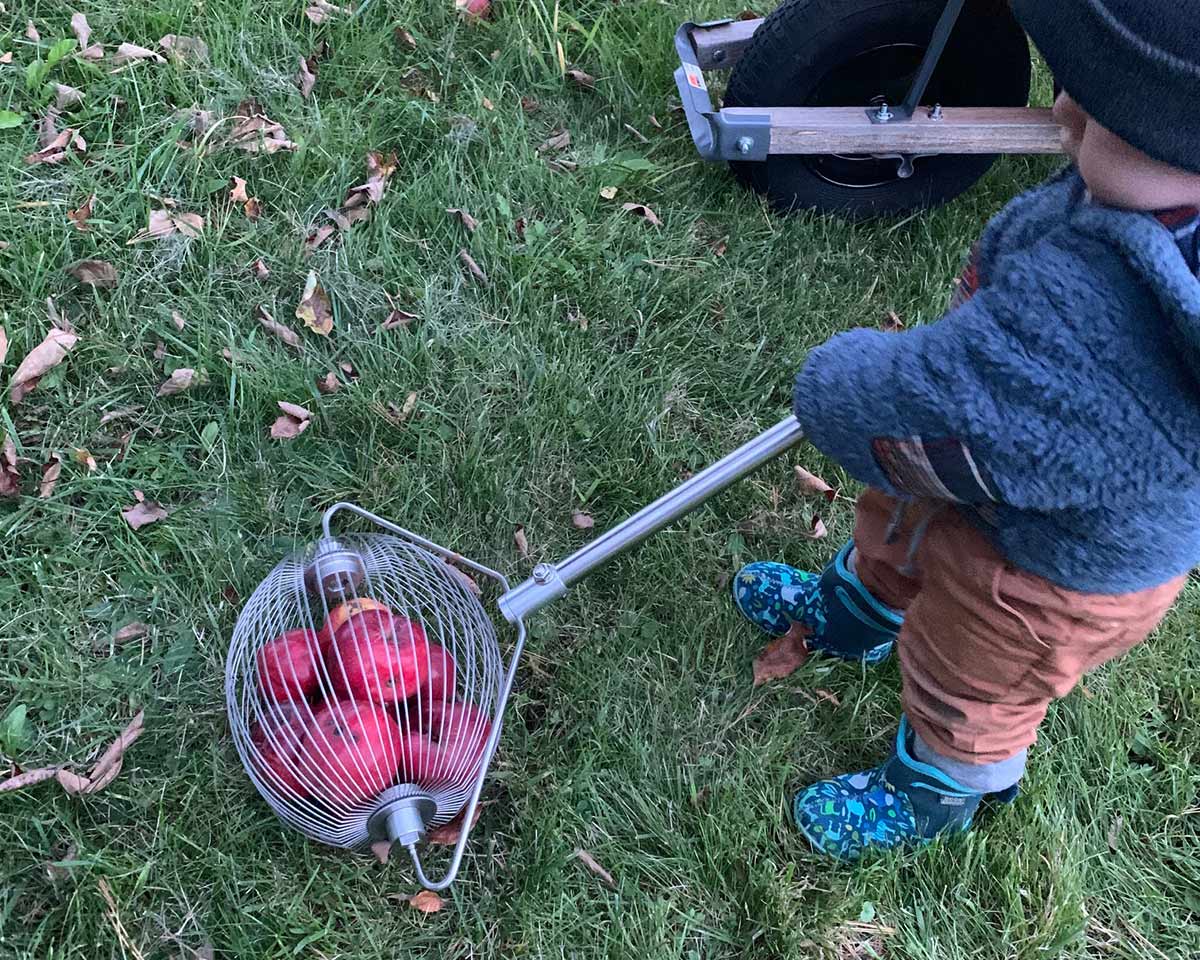Once flowers have bloomed and your yard plants have died back in the fall, you might wonder where all the insects you saw in your yard spend the winter. Most overwinter right where they spent all summer, just hidden (and often in a different life stage!)
This is why high-quality habitat for pollinators and other beneficial insects needs to include locations and materials for nesting and overwintering. We have previous blogs and factsheets on what overwintering habitat includes, including leaving the leaves, saving stems and stumps, providing rock shelters, and keeping some soil bare for ground-nesting insects.
But leaving the leaves and other overwintering resources doesn’t just help pollinators, it also provides year-round habitat for all sorts of beneficial insects that eat pests in your yard!

Will leaving the leaves help with pests?
Good news: the bugs that eat pest insects in your yard also use leaf litter and stems to overwinter in your yard and complete their life cycles!
Providing overwintering habitat for these creatures ensures they will emerge the following year to provide free natural pest control. This can help eliminate the need for pesticides in the future!
Common predatory insects include assassin bugs, minute pirate bugs, lady beetles, and syrphid flies. These all overwinter under leaf litter, under bark, or in other sheltered areas. Predators use more than just leaves – praying mantises overwinter as eggs attached to stems or other vegetation!
Parasitoid wasps overwinter either within their hosts, which often rely on leaf litter, or outside their hosts, where they rely on leaves or bark to shelter them
Most beneficial insects are sensitive to pesticides, so providing year-round habitat for them and eliminating pesticide use is the best way to control pests in an ecologically friendly way.

Are there pests in fallen leaves?
All sorts of insects rely on leaf litter to overwinter – and, yes, that does include some species that can cause issues in your garden. But that doesn't mean you shouldn't leave the leaves, especially around native plants!
In a diverse and balanced garden ecosystem, predators and parasitoids will keep pests in check. These beneficial insects need fallen leaves to survive the winter, and actually benefit from having at least a few pest insects around to eat.
It’s worth remembering that just because an insect is an herbivore doesn’t mean it is a “pest”! A lot of beneficial insects eat or otherwise use plant material, and plants can sustain those nibbles. Only about 2% of described insect species can cause issues that lead us to call them “pests” (and usually only in certain situations). The other 98% are beneficial to us and play important roles in ecosystems, like pollination, pest control, and decomposition.
How can I safely control pests and diseases in my garden?
In general, leaving fallen leaves and dried stems where they are is the right move. But there are some cases where pests and diseases are best addressed by removing plant material from your yard. However, it doesn’t need to be all-or-nothing!
Follow our tips for deciding which leaves to tidy and which to leave alone:
- If you live in a region with ticks, you can rake the leaves away from where pets and people are likely to encounter them. If you border a forested area, putting them deeper into the woods may reduce the chance of tick encounters.
- Pick up fallen fruit, like apples, from the ground so insect pests do not continue to develop in the fallen fruit and overwinter in your yard. There are gardening tools that make this process quick and easy.
- Remove fallen leaves and standing stems of plants infected by fungi or pathogens. Removing diseased vegetation off-site lessens the chance of new growth being infected. (Home compost piles may not get hot enough to kill plant diseases, so the trash bin is a safer bet!) Be sure to sanitize any garden tools you use.
- In vegetable gardens, removing or mulching the leaves and stems of plants is a way to prevent garden insect pests from overwintering. This is especially true in veggie gardens that have been dealing with pest problems. Again, if you’ve been dealing with pathogens, removing plants off-site is a better solution to help break the disease cycle.
- Some species of invasive plants are easily spotted in the fall. In this case, don’t worry about destroying insect habitat; it’s better to tackle those invasive weeds! Be sure to replant the area with native plants afterwards.

By leaving the leaves and saving the stems, you are not only providing essential habitat for pollinators like bees and butterflies, but also creating a haven for all sorts of other beneficial insects that need shelter to survive. In the spring, keep an eye out for these helpful predators as they hunt pests and help with nutrient cycling in your yard!





